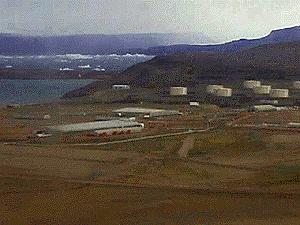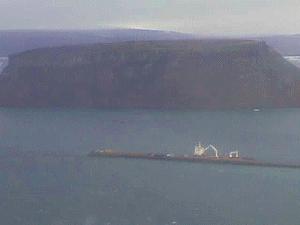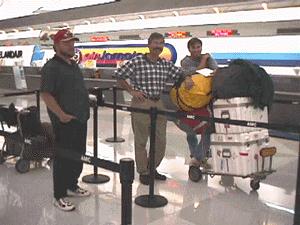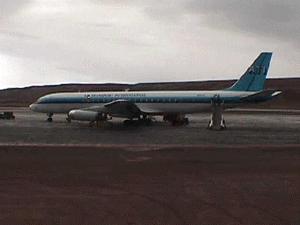19 August, 1999
Aloha from Thule, Kevin Kelly, Dr. Radtke's research assistant and I have
been traveling since 9:10 PM Tuesday night Hawaii time to Baltimore
International Washington International airport and arrived at around 6:00PM
Wednesday night east coast time. There were many people waiting to get on a
flight to Mildenhall, England at the International terminal and initially
we thought they would all be going to Thule and that surprised us. We had
to wait until 9:00PM to check in and then the flight left at 3:00AM. John
Babaluk, the Canadian fisheries biologist met us at 8:00 PM and we had a
late dinner together after checking our baggage. John is from Winnipeg and
has been doing research on arctic fish for 25 years. He has been to many
remote locations and has even camped out in the arctic for 4-month periods
doing his research. He also has a polar bear concern and we talked about
different methods of protection. He was going to bring a perimeter electric
warning fence to put around our camp. The fence sets off a flare to
frighten the bear and to wake the campers. We decided that an Inuit hunter
and a proven bear dog would be safer and more appropriate.
We boarded the plane at 3:00AM Thursday morning with several soldiers
returning from R & R and some civilian contractors who would be employed at
the base for a year. The soldiers also do a year of duty. Thule is an air
force base built in 1952 whose mission is to house an early warning missile
defense system. At one time there were 12000 soldiers here. There are
around 120 soldiers stationed here now and around 400 support personnel;
they are dismantling many of the structures because of the high cost of
heating them. The steam heat, drinking water, and sewage are carried
through pipes from building to building above ground. If it melted the
permafrost layer it would be a muddy quagmire. There is a large Danish and
Greenlandic presence in the contractors that actually keep the base going.
We got off the DC-8 at 11:00AM Greenlandic time Thursday and were greeted
aloha style at the runway by the air force commander, Colonel Hatch and his
second in command. It was very cold and windy and I asked if I could take
pictures and immediately started clicking away. Inside the command building
we were greeted by the Danish Police Inspector and the Danish Liaison
Officer whisked away to his offices. The Danish Police Inspector's
jurisdiction is the largest in the entire world. We were informed that our
permit to be on the base and conduct research in Greenland had not yet been
approved. He told us that we would have to stay on base until the permit
was official. We returned to the Base terminal and were met by TSgt.
Wilkerson who gave us a quick tour of the base and then to our lodgings
with the Peregrine Falcon Foundation facilities; their web site is
www.peregrinefund.org. We met Jack Stephens who works as a meteorologist
for the air force and has lived here for 27 years. He is an amazing
wildlife photographer and is creating a web site for his images. He stays
here year round and works with the Peregrine Falcon Foundation when they
return each year in the spring.
We checked to make sure our gear had arrived and found it at the
helicopter hanger. We opened all of the containers to check the equipment
and then went to supper at the Dundas dining hall. For $3 we received an
excellent meal. The workers were mostly Danish and Inuit. I noticed the
Inuit population spoke both English and Danish, besides their native
tongue. We returned to our new base and I quickly nodded off to sleep.


Saunders Island as we approach Thule.

Dundas Mountain, as we approach Thule with the harbor down below. Dundas was flattened by a glacier long ago.

Standing in line at BWI; left to right James Reeves, engineer; John Babaluk, research biologist; Kevin Kelly, research assistant.

The Thule Terminal. All of the buildings on base are similar in construction.

Our DC-9. We were seated in the tail section with a capacity of 32. The mid section is a cargo bay.

Contact the TEA in the field at
.
If you cannot connect through your browser, copy the
TEA's e-mail address in the "To:" line of
your favorite e-mail package.
|
